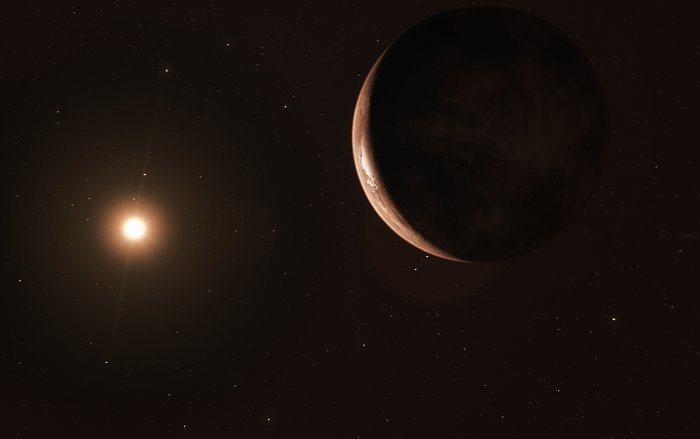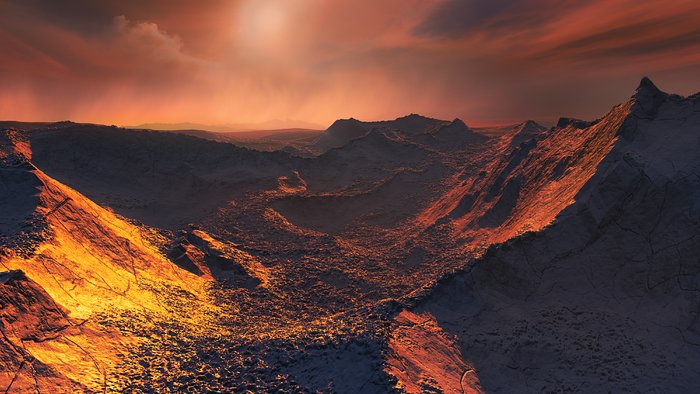Among the most compelling exoplanets discovered to date is a "super-Earth" around Barnard's star, the closest single star to our solar system. This star, a cool red dwarf significantly smaller than the Sun, is located only six light-years away—just a bit farther than the nearest stars, the triple-star Alpha Centauri system. The proximity of its parent star makes the newfound world a potentially excellent candidate for detailed studies with future instruments. See also: Alpha Centauri; Earth; Exoplanet; Light-year; Planet; Solar system; Star; Sun

Researchers announced the finding in November 2018 based on high-precision radial velocity measurements of Barnard's star taken by seven different instruments going back 20 years. These observations of the star's light registered a slight wobbling induced in the body's movement by the gravitational tugging of the candidate exoplanet. Initial observations suggest that this world—designated Barnard's star b—has a minimum mass of 3.2 Earths, placing it in the super-Earth class of planetary bodies for which no analog exists in our solar system. Scientists do not yet know what these worlds are typically like—whether mostly rocky like Earth, or potentially covered in either deep oceans or ices, or possibly predominantly gassy, like Uranus and Neptune in our solar system, which have 14 and 17 times Earth's mass, respectively. See also: Astronomical spectroscopy; Doppler effect; Gas; Gravity; Light; Mass; Neptune; Ocean; Uranus; Water
Besides mass, the radial velocity measurements, along with other observations, provide some constraints on Barnard star b's orbit about its stellar host. The world's year is estimated to be about 233 Earth-days. Its orbit is less than half (approximately 40%) of the distance of Earth's orbit around the Sun. Barnard's star b would be significantly colder than Earth, however, because it receives only 2% of the energy that Earth does, on account of Barnard's star being smaller and dimmer than the Sun. The temperature on the planet would be in the ballpark of –170°C (–274°F), a bit colder than Saturn and inhospitably frozen. While Barnard's star b does not, therefore, appear to be a likely place for the development of extraterrestrial life, it could serve as a highly valuable planetary specimen for learning about the origins and properties of super-Earths. See also: Astrobiology; Astronomical unit; Earth rotation and orbital motion; Orbital motion; Saturn; Temperature






